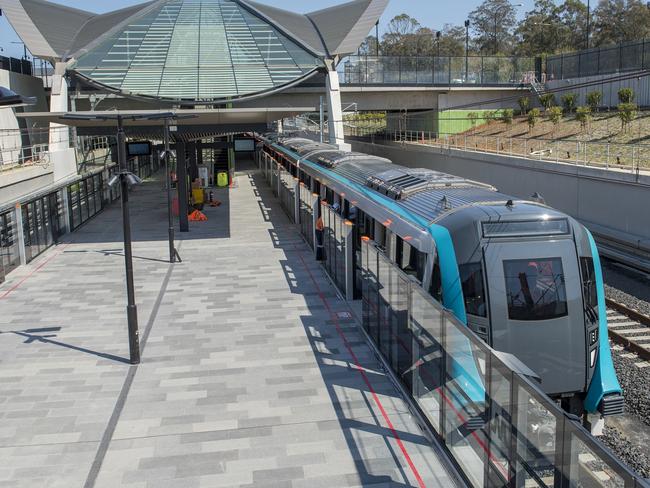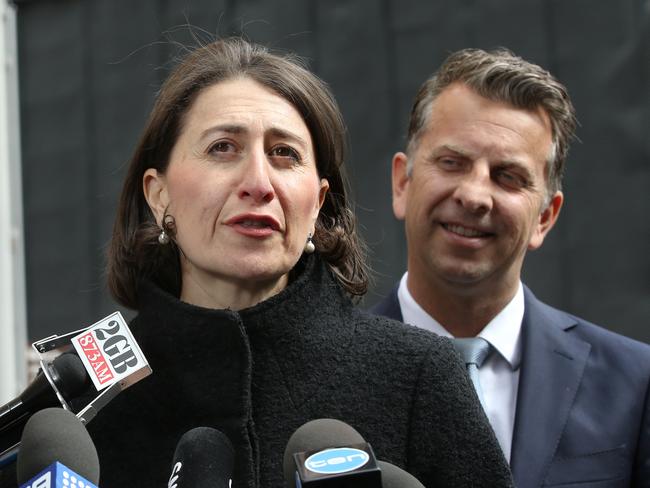New Metro stations eliminate gap between platform and train
AUSTRALIA’S first metro train station with “no gaps” between the station and the platform has been unveiled, allowing prams to be pushed straight onto carriages.
NSW
Don't miss out on the headlines from NSW. Followed categories will be added to My News.
AUSTRALIA’S first metro train station with “no gaps” between the station and the platform has been unveiled, allowing prams to be pushed straight onto carriages.
The Sydney Metro Northwest line, which will open next year between Rouse Hill and the city, will feature 15 automated metro-style single carriage trains running every hour.

Premier Gladys Berejiklian visited the newly completed Tallawong Station at Rouse Hill yesterday and said the new station featured glass screens preventing people from falling onto the tracks – the first in the country.
MORE NEWS:
John Ibrahim caught on video ‘shooting’ friend
Hunt for gang associate over Sydney teen’s execution
The day Ivan Milat tried to kill me
“We’ve never before had these on-platform screens. That increases safety so much for our travelling public,” Ms Berejiklian said.

“This means you cannot have any access onto the rail unless the train has pulled up safely and you alight the train.”
Transport Minister Andrew Constance said at least 300 people had fallen between a train and the platform last year, so the new Metro system would eliminate that.
“From a transport minister’s perspective there is nothing more horrific than seeing incidents occur on our rail network – particularly when people fall through the gap,” Mr Constance said.
“The great thing about Sydney Metro is we don’t have to tell people to mind the gap. We’ve closed the gap.
“The fact you’re able to quite literally roll a pram onto the carriages, if you’re a person with a disability, accessibility is no barrier.
“Very pleasingly, having the glass screen doors, safeguarding commuters on the platform from an incoming train will make an incredible difference when it comes to passenger safety.”
The project has come under budget by $500 million and includes 13 new stations.
So far 10,000km of testing has taken place.

